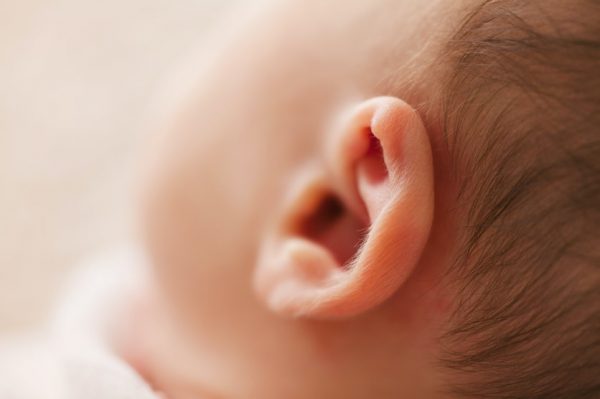
Ear infection in children, why?
Most young children and toddlers suffer from ear infection. If not given immediate attention this might result in loss of hearing and other problems.
Ear infection is one of the most common reason of parents visit with child to doctor! Children suffer from ear infection often than adults.
Ear infection is inflammation caused by bacteria in the middle ear. Bacteria infect the fluid behind the eardrum.
Symptoms of ear infection:
- Crankiness and crying
- Fever
- Yellow or white fluid draining from ear
- Clumsiness or balancing problem
- Trouble in hearing or problem hearing quiet sounds
- Itching and pulling of the ear
- Reduced appetite
- Unpleasant smell from ear
- Difficulty in sleeping
Scientific name of ear infection “otitis media or OM”. There are 3 different types of ear infection.
- Acute otitis media (AOM): One of the most common ear infection. It is commonly called earache. Child might also get fever. Infected middle ear swells, turns red and fluid traps behind ear drum
- Otitis media with infusion (OME): When fluid stays trapped behind after ear infection. Cold, sore throat or upper respiratory infection might happen. Doctor will be able to see the trapped liquid.
- Chronic otitis media with effusion (COME): When the fluid remains in the middle ear for longer time children’s hearing gets affected.
Reasons for ear infection in children:
Bacteria are main reasons for ear infection. Both bacteria and viruses are responsible too.
Normally any fluid that enters the eardrum area drains quickly through tubes called eustachian tubes.. Eustachian tubes connect the middle ear to back of nose and throat. These tubes are short and horizontal in babies compared to adult ears and babies are more prone to get infected. It eustachian tubes blocked (during cold, throat infection, allergies, sinus) then the fluid gets trapped in the middle ear. Microbes like to grow in dark and wet area. Bacteria takes this place and causes inflammation behind eardrums.
Research studies also say using pacifier can increase infection risk. One should take proper precaution of cleaning pacifier.
Treatment:
In many cases infections clear up on their own. Pediatricians recommend before starting antibiotics it always better to wait and see whether the symptom reduces on its own.
Consult your doctor if you feel symptoms are severe and child is not happy. Doctors check child’s eardrums movement. If the movement of eardrum not there, it means fluid is collected and infected.
If baby is 6 months old, doctor might give mild infant pain killers to relieve pain. Don’t give any medicine to baby until you contact your pediatrician.
If your child is not doing better after 48 to 72 hours, doctor might suggest antibiotics. If so, complete the full course. If not, infection will not reduce and you won’t know how the medicine worked for your child.
Before trying any home remedies please consult your doctor.
Prevention of ear infection
- Ear infection is not contagious, but respiratory infections can lead to ear infection.
- Wash your hands and child’s hands
- Clean nose during cold
- Change diapers at proper time to avoid any additional infection
- Clean pacifier: Unhygienic pacifier can result in throat infection through which bacteria enters ear fluid.
- Encourage child to drink more liquid as swallowing helps to drain the middle ear fluid.
- Keep baby’s vaccination current- Immunization helps to prevent several illness that can lead to ear infection.
- Breastfeeding: If you are new mother, breastfeeding the baby at least for six months helps to boost their immune system.
- Keep child away from tobacco smoke : Smoking only suppresses child’s immune system and increases breathing problem. It also makes it difficult for child to fight against infections
- Ear tubes insertion: Otolaryngologist helps to insert small ear tubes to releases pressure that also acts a vent, letting air in and fluid out in the ear. This is a common surgical procedure in practice in many countries. Talk to your doctor if your child has frequent ear infection and needs an ear tube.
For more information on ear infections visit:
- https://www.nidcd.nih.gov/health/ear-infections-children
- http://kidshealth.org/en/parents/otitis-media.html
- https://www.parents.com
Image credit: https://www.pexels.com/photo/macro-photography-of-babys-ear-374765/ https://www.pexels.com/@burst (Free for commercial use)
Author: Sumana Rao | Posted on: February 8, 2018






















One Comment on “Ear infection in children, why?”
Simply put, ear aches are when your child experiences pain in one or both of their ears that does not disappear overnight. Children deal with the condition often, especially those under the age of 5, after colds and other upper respiratory infections.
Write a comment